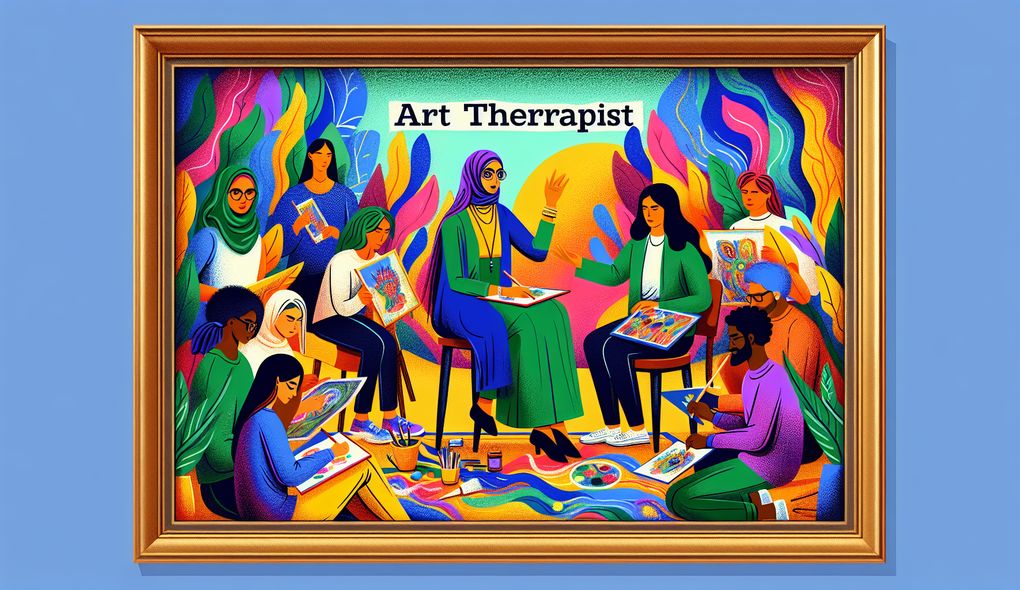How would you conduct an initial assessment to determine a client's therapeutic needs?
JUNIOR LEVEL

Sample answer to the question:
To conduct an initial assessment to determine a client's therapeutic needs, I would start by building rapport with the client to create a comfortable and trusting environment. I would then ask open-ended questions to gather information about their concerns, goals, and past therapeutic experiences, if any. Additionally, I would use art-based assessments such as drawing or painting to gain insights into their emotions, thought processes, and strengths. Observing the client's non-verbal cues and body language would also be crucial. After gathering all the necessary information, I would analyze the data to identify their therapeutic needs and develop a personalized treatment plan.
Here is a more solid answer:
When conducting an initial assessment to determine a client's therapeutic needs, it is essential to establish a strong rapport by actively listening, showing empathy, and ensuring cultural sensitivity. I would begin by gathering information about the client's concerns, goals, and relevant background through open-ended questions. Additionally, I would utilize art-based assessments, such as drawing or collage-making, to encourage self-expression and gain a deeper understanding of their emotions and experiences. Observing the client's non-verbal cues and body language would also provide valuable insights. Once all the information is collected, I would analyze and interpret it to identify the client's therapeutic needs and develop a personalized treatment plan. Collaboration with other healthcare professionals and regular documentation of client progress would also be essential in providing effective and holistic therapy.
Why is this a more solid answer?
The solid answer elaborates on the importance of building rapport, cultural sensitivity, and collaboration within a therapeutic team. It includes specific details about using art-based assessments and emphasizes the need for documentation and collaboration. However, it can be further improved by providing examples of art therapy interventions and discussing the integration of therapy plans into broader treatment plans.
An example of a exceptional answer:
To conduct an initial assessment and determine a client's therapeutic needs, I would employ a multifaceted approach that combines active listening, art-based assessments, and collaboration with the client and other healthcare professionals. Firstly, I would create a safe and supportive environment where the client feels comfortable opening up. Through active listening and empathetic communication, I would encourage them to share their concerns, goals, and relevant background. Using art materials and mediums, I would facilitate art-based assessments that allow for self-expression, exploration of emotions, and the identification of underlying themes. These assessments could include activities like creating a visual journal or engaging in guided imagery. By observing the client's artistic choices, symbols, and non-verbal cues, I can gain deeper insights into their experiences and needs. Furthermore, I would consider the client's cultural background and tailor the assessments accordingly. Additionally, I would collaborate with other healthcare professionals to integrate art therapy interventions into the client's broader treatment plan. Regular documentation would be maintained to track the client's progress and make necessary adjustments. Overall, my aim would be to provide client-centered therapy that promotes personal growth, emotional well-being, and increased self-awareness.
Why is this an exceptional answer?
The exceptional answer provides a comprehensive and detailed approach to conducting an initial assessment. It emphasizes the importance of creating a safe and supportive environment and includes specific examples of art-based assessments. The answer also highlights the need for cultural sensitivity, collaboration, and documentation. Furthermore, it discusses the goal of client-centered therapy and the promotion of personal growth and self-awareness. Overall, the exceptional answer demonstrates a thorough understanding of the role of an art therapist in assessing clients' therapeutic needs and providing effective interventions.
How to prepare for this question:
- Familiarize yourself with various art-based assessments commonly used in art therapy.
- Develop strong active listening and communication skills to build rapport with clients.
- Study and understand different cultural practices and their implications for art therapy.
- Research current art therapy research and methodologies to stay updated with the latest developments.
- Practice documenting client progress and designing treatment plans based on assessment findings.
What are interviewers evaluating with this question?
- Interpersonal and communication skills
- Observational skills and ability to assess client needs
- Organizational and documentation skills
- Ability to apply art therapy interventions effectively
- Empathy and compassion for clients

